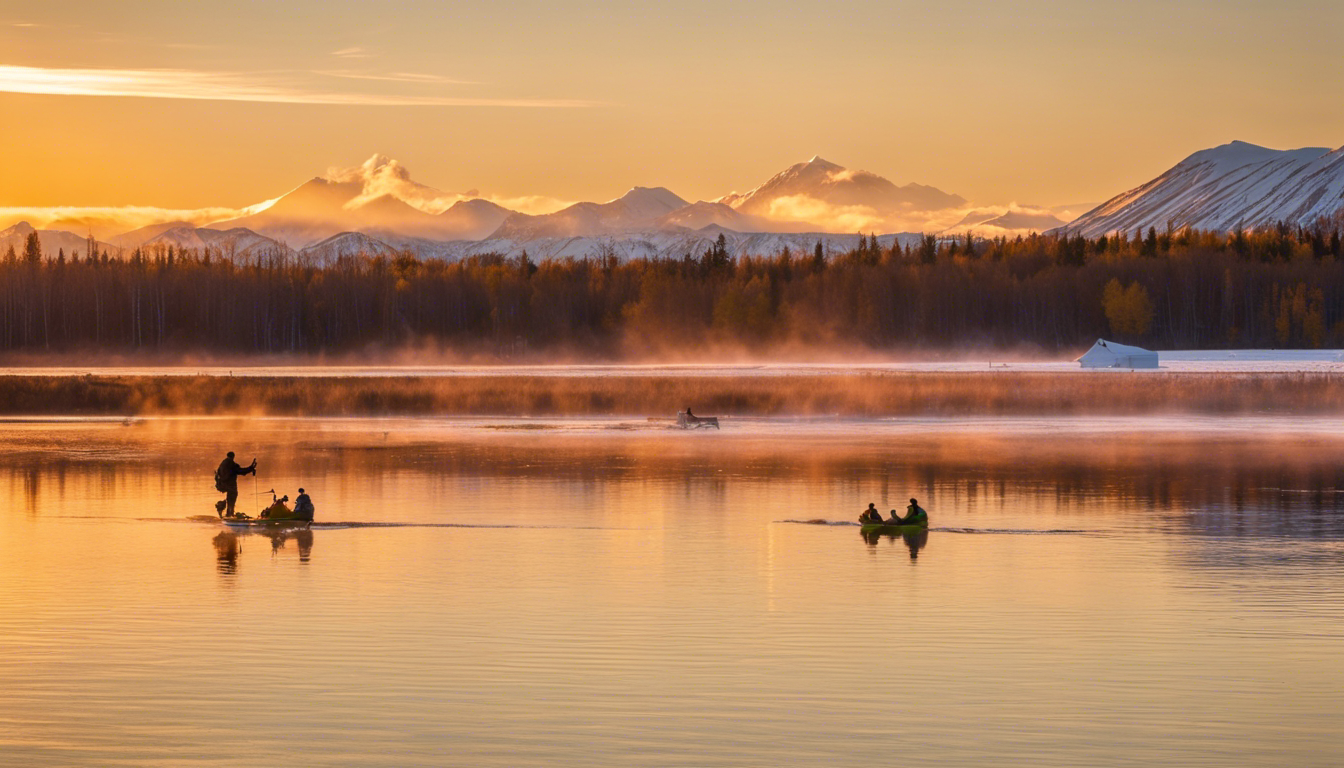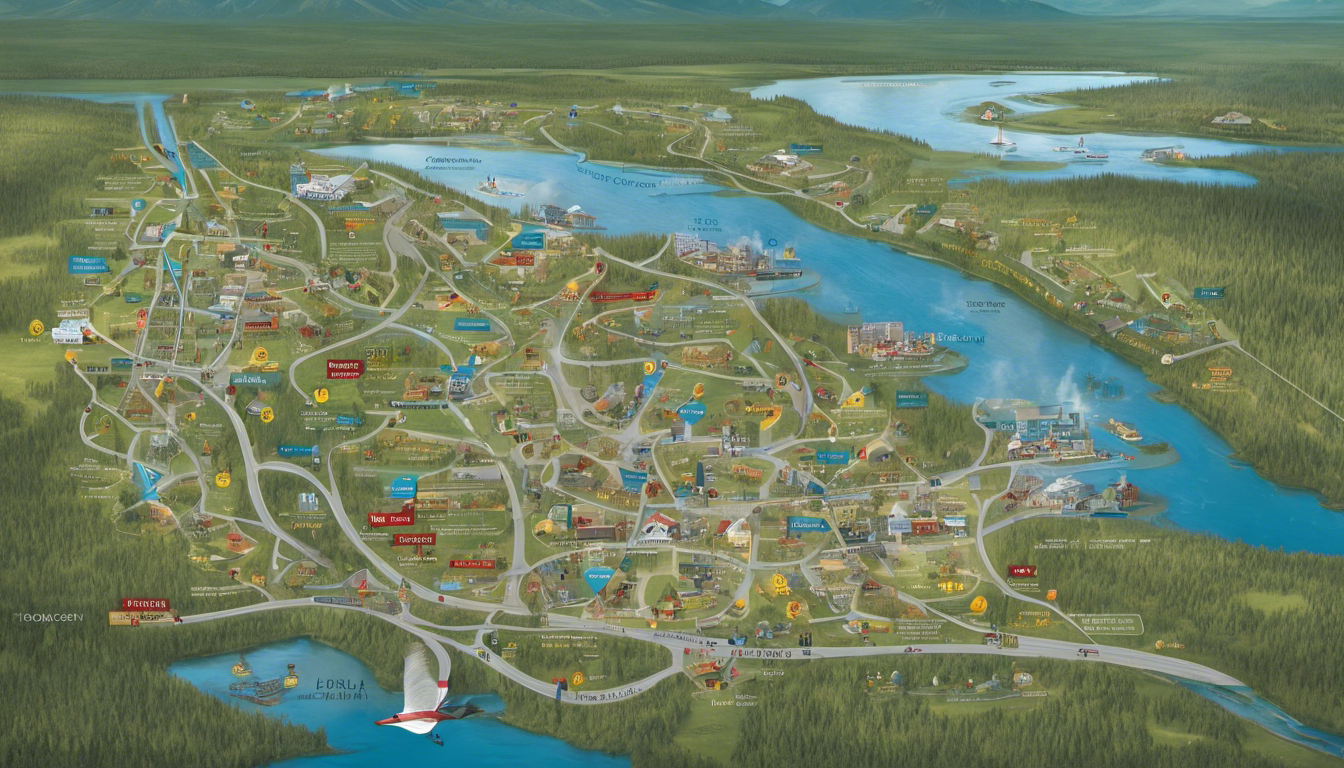Moving to Gateway, Wasilla offers not just an embrace of the great Alaskan outdoors but also a lifestyle that's evolving with its growing population. Since 2000, Gateway has experienced an impressive population change of +88.1%, reflecting its increasing appeal as a place to live. With a balanced gender distribution—50.0% males and 50.0% females—and a median resident age of 34.2 years, it's a vibrant community that's younger than the Alaska median age of 35.6 years.
The area's economic prosperity is evident in its rising median household income, which reached $109,991 in 2021, up from $60,385 in 2000. Similarly, the estimated per capita income in 2021 was $46,438, nearly doubling from $24,548 in 2000. These figures underscore the economic growth and opportunities available in Gateway.
Housing is a crucial aspect of Gateway's allure, with the estimated median house or condo value in 2021 at $363,927, a significant rise from $152,400 in 2000. This growth in property value reflects the area's desirability and the quality of life it offers its residents. The cost of living index in March 2022 stood at 102.2, close to the U.S. average, indicating that despite its remote location, living in Gateway is comparably affordable.
Gateway's community is diverse and welcoming, with a racial makeup that includes 67.5% White alone and significant representations from multiple races, creating a rich tapestry of cultures. The low poverty rate of 2.6% in 2021 further highlights the community's economic stability and the supportive nature of its residents.
Education is a cornerstone of the Gateway community, with public schools rated above average. This commitment to education is reflected in the high median household income and the fact that 13% of residents hold a Master's degree or higher, with a significant portion of the population having some college or an associate's degree. Gateway ranks #1 in Alaska for best suburbs to raise a family and boasts excellent grades for diversity and job opportunities, making it an ideal place for families and young professionals alike.
In summary, moving to Gateway, Wasilla, is more than just a chance to experience the raw beauty of Alaska; it's an opportunity to be part of a thriving, dynamic community. Its growing population, economic opportunities, quality housing, and excellent educational institutions make Gateway a gateway to family bliss and a fulfilling lifestyle amidst Alaska's stunning landscapes.
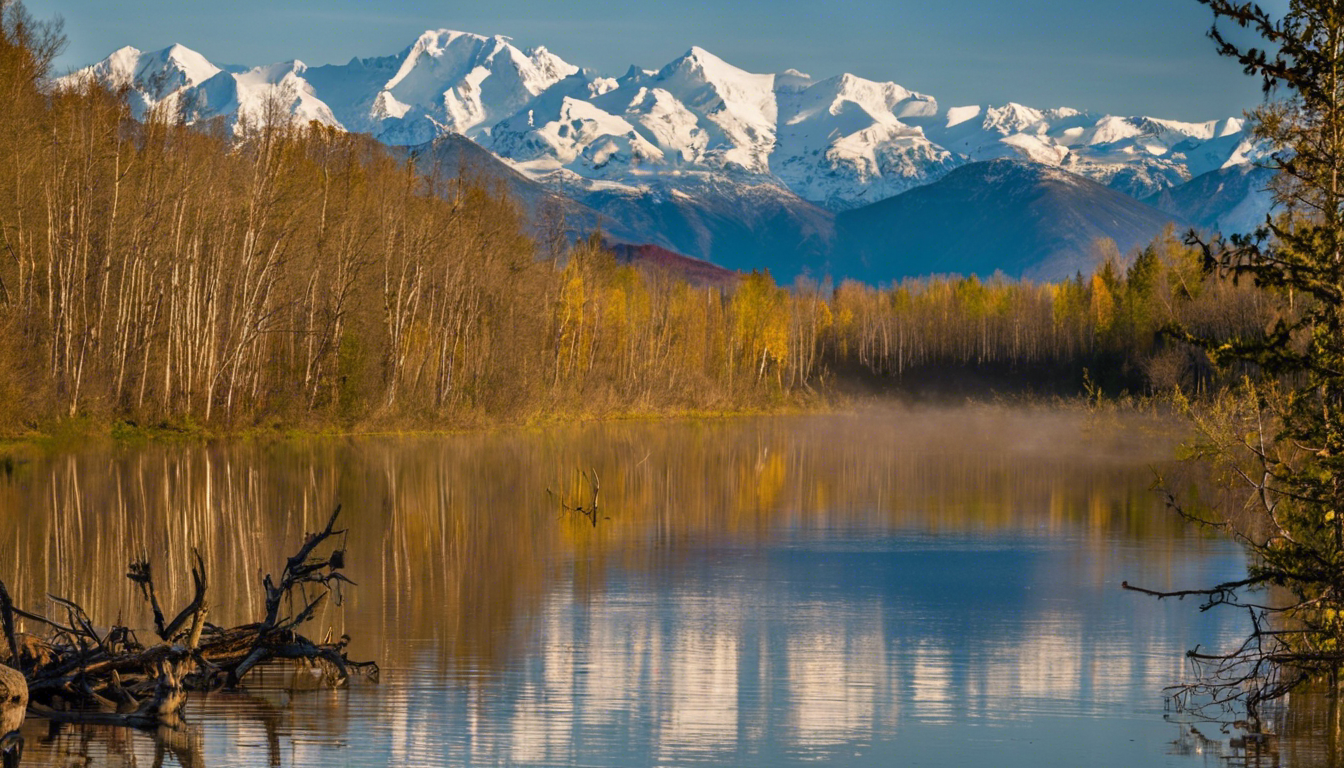
Moving to Palmer, Alaska is akin to stepping into a picturesque painting where the small-town charm and scenic beauty come together to create a serene lifestyle, surrounded by the breathtaking landscapes of the Matanuska-Susitna Valley. This quaint town is enveloped by acres of farmland and dramatic mountain vistas, offering a peaceful escape from the hustle and bustle of city life, notably different from the more urbanized feel of Anchorage. With its adequate stores and medical professionals, Palmer provides a comfortable living environment that balances modern conveniences with the appeal of rural living.
However, life in Palmer, like much of Alaska, comes with its unique set of challenges and considerations. The long, dark, and harsh winters of Southcentral Alaska are a significant factor, requiring residents to adapt to extended periods of darkness and cold. Conversely, the nearly 24 hours of daylight in summer offer a bright contrast, with ample opportunity for outdoor activities and enjoying the natural surroundings. Despite these seasonal extremes, the community's spirit remains unwavering, with a focus on togetherness and mutual support.
The cost of living in Palmer, as in many parts of Alaska, can be higher than the national average, influenced by factors such as transportation and the price of goods. Yet, many find the quality of life, the connection to nature, and the diversity, educational opportunities, and cultural emphasis on arts and music to outweigh these economic considerations. Palmer's identity as a "nice little town" in the valley, with its community-oriented lifestyle and scenic beauty, makes it a cherished home for its residents.
Palmer has experienced significant growth and change over the years. Since 2000, Palmer has seen a population growth of +34.4%, reaching 6,094 in 2021. This growth is complemented by a median age of 31.3 years, indicating a vibrant community with a mix of young families and professionals. The town's economy is supported by a median household income of $61,720 in 2021 and an estimated median house or condo value of $243,886, reflecting the quality of life and the desirability of living in Palmer.
The community's commitment to education and culture is evident, with 92.7% of the population having a high school degree or higher and 22.3% holding a bachelor's degree or higher. Additionally, Palmer's racial makeup is diverse, including 66.7% White alone, 10.6% Two or more races, and 8.5% American Indian alone, creating a rich tapestry of cultures and backgrounds.
In summary, Palmer offers a blend of scenic beauty, small-town charm, and a tight-knit community that appeals to families and individuals seeking a slower pace of life amidst Alaska's stunning natural environment. While the challenges of living in such a unique climate cannot be overlooked, the rewards of life in Palmer – from the breathtaking landscapes to the strong sense of community – make it a compelling choice for those looking to call Alaska home.
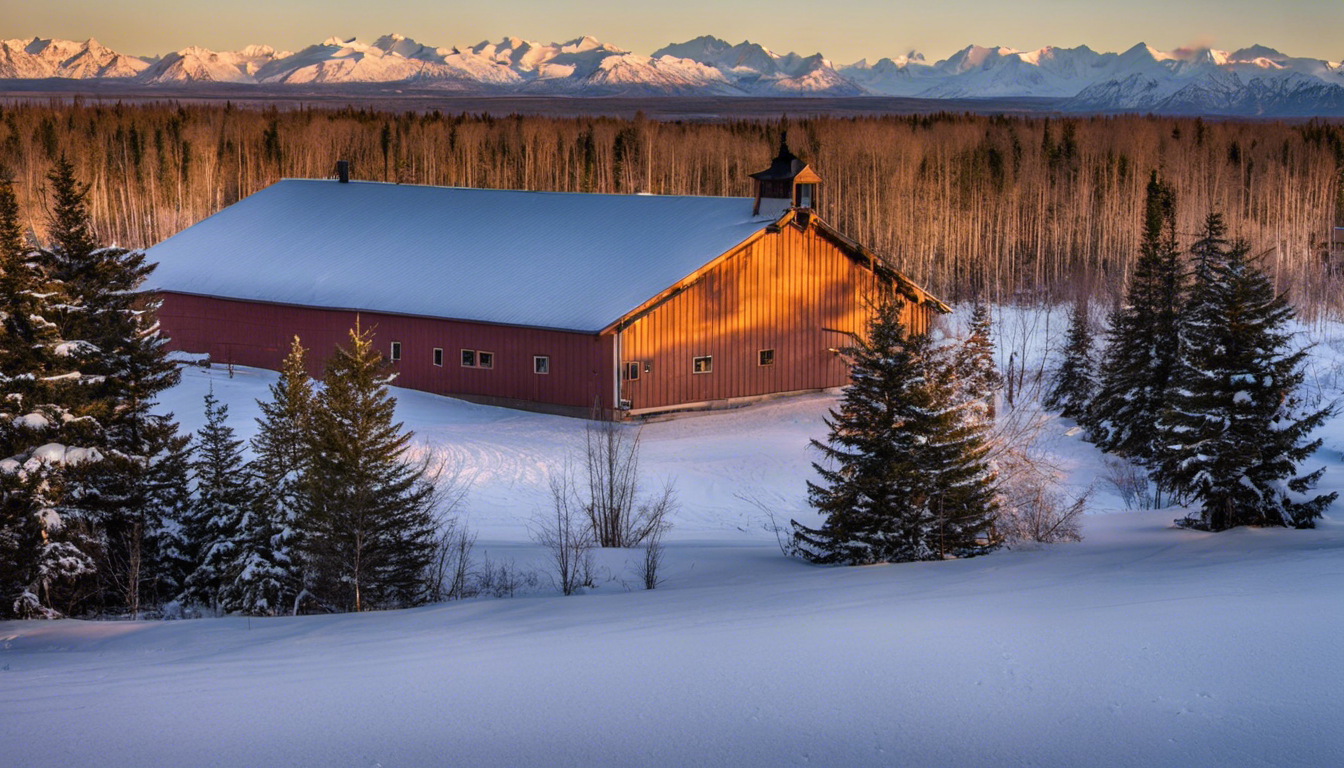
Moving to Tanaina, Wasilla is like discovering a hidden gem nestled in the heart of Alaska. This serene community is the epitome of safety and tranquility, offering residents a peaceful retreat from the hustle and bustle of city life. With a population of 8,817 in 2020, up from 8,197 in 2010, Tanaina represents the sixth-most populated Census-designated place in Alaska, showcasing its growing appeal.
In Tanaina, every corner exudes a sense of calm, making it an ideal place for families seeking a harmonious lifestyle amidst nature's splendor. The community prides itself on its low crime rates and neighborly spirit, where everyone looks out for each other, creating a tight-knit community that feels more like an extended family. The median household income saw a significant rise from $64,491 in 2000 to $76,114 between 2010-2014, and an estimated $81,202 in 2021, reflecting the community's economic stability.
The beauty of living in Tanaina extends beyond its safety and serenity. The area is surrounded by Alaska's breathtaking natural scenery, offering endless opportunities for outdoor adventures. Residents can enjoy the pristine wilderness, from exploring the vast forests and mountains to fishing in the crystal-clear waters that abound in the region. The connection to nature is profound, providing a backdrop for a lifestyle that is both enriching and invigorating.
Despite its remote charm, Tanaina does not compromise on the essentials. The community is well-equipped with necessary amenities and services, ensuring that the needs of its residents are met with ease. However, newcomers should be mindful of the challenges that come with living in Alaska, such as the extreme cold during winters and the higher cost of living compared to other states. Planning and preparation are key to making the most out of the unique Alaskan lifestyle.
Tanaina offers a unique blend of safety, serenity, and natural beauty, making it a perfect place for those looking to settle down in an area that promises a high quality of life. Its strong community spirit, coupled with the endless outdoor activities, ensures that life in Tanaina is not just about residing in a place but about being part of a vibrant community that cherishes its environment and each other. With a cost of living index in March 2022 at 102.6, and housing options ranging from all housing units at an average price of $286,540, Tanaina offers a balance of affordability and quality living amidst Alaska's stunning landscapes.
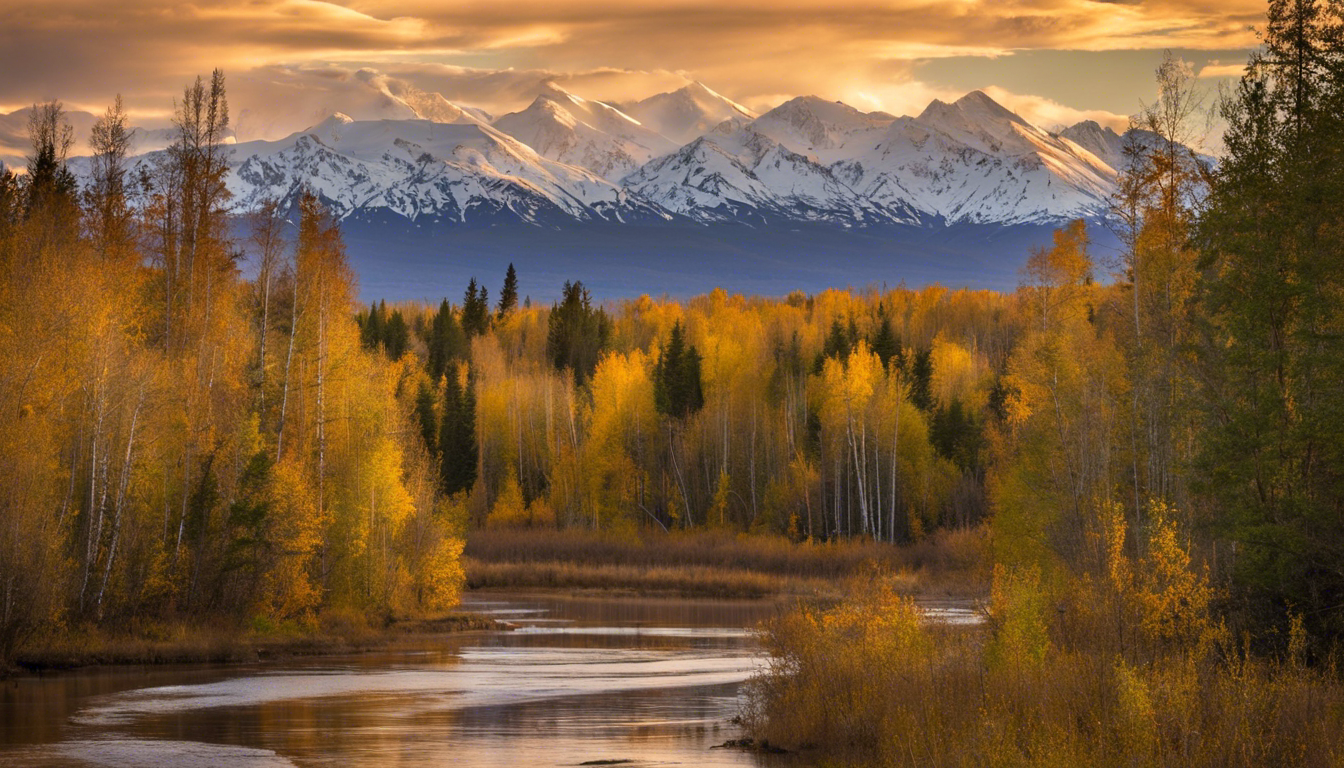
Moving to Meadow Lakes, Wasilla unfolds an opportunity to breathe in the fresh Alaskan air and immerse oneself in a community where the grandeur of nature intertwines with daily life. This serene locale offers a respite from the hustle and bustle, presenting a canvas where each resident paints their unique Alaskan story. Here, the essence of living is harmonized with the rhythm of the natural world, allowing for a lifestyle that is both tranquil and invigorating.
The allure of Meadow Lakes lies not just in its picturesque landscapes but also in the practical aspects of living in such a setting. Access to Alaska, particularly areas like Meadow Lakes, is facilitated through various means, including the Alaska Marine Highway, making the journey to this northern haven an adventure in itself. The reasons individuals and families are drawn to this area are as diverse as the landscape itself, ranging from the scenic beauty and recreational opportunities to the sense of community and the promise of a life that is in closer contact with nature.
Living in Meadow Lakes, residents share their experiences of adapting to the unique Alaskan climate, from the enchantment of the midnight sun to the necessity of preparing vehicles for the harsh winters. The area offers a blend of challenges and rewards, such as the importance of fishing for salmon and the need to be vigilant for moose on the roads. These aspects underscore the importance of community and the shared experiences that bind the residents together.
For newcomers, the transition to life in Meadow Lakes is supported by a wealth of advice from those who have made the journey themselves. Suggested steps for a successful move include embracing the local lifestyle and finding employment that allows one to enjoy the fulness of Alaskan life. The community here stands out for its supportive nature, high quality of education, and the myriad recreational activities that make Alaska a great place for raising a family. The sense of community, quality of education, and the natural beauty of the landscape are just a few attributes that contribute to the area's appeal.
Meadow Lakes has witnessed significant growth and development. Since 2000, its population has seen a dramatic increase of 57.1%, reaching 7,570 by 2010. This community, predominantly male (51.7%) and with a median resident age of 38.6 years, showcases the vibrant and dynamic nature of its residents. The ZIP code for Meadow Lakes is 99654, a number synonymous with a thriving Alaskan community.
The estimated median household income in 2021 was a substantial $75,249, a significant rise from $41,030 in 2000, reflecting the economic prosperity of the area. Similarly, the per capita income for the same year was estimated at $35,005, up from $17,295 in 2000, highlighting the financial stability of its residents. Housing has also seen appreciable growth, with the estimated median house or condo value reaching $261,810 in 2021, a noteworthy increase from $97,400 in 2000. The mean prices in 2021 for all housing units were $279,698, indicating the area's desirability and the quality of life it offers its residents. The median gross rent in 2021 was $1,178, and the cost of living index in Meadow Lakes in March 2022 was 107.3, suggesting it is more expensive than the U.S. average yet still an attractive place to live.
The community is served by various facilities, including volunteer fire departments and ambulance services, and is characterized by its scenic lakes and residential areas. This blend of modern amenities with the untouched beauty of Alaska makes Meadow Lakes an ideal location for those seeking a balance between nature and comfortable living.
In summary, Meadow Lakes, Wasilla, represents a distinctive opportunity to live in harmony with the Alaskan wilderness. It's a place where adventure meets tranquility, and where the challenges of the northern climate are met with resilience and a strong community spirit. With its significant population growth, economic prosperity, and increasing property values, Meadow Lakes stands out as a compelling choice for residence amidst Alaska's stunning landscapes.
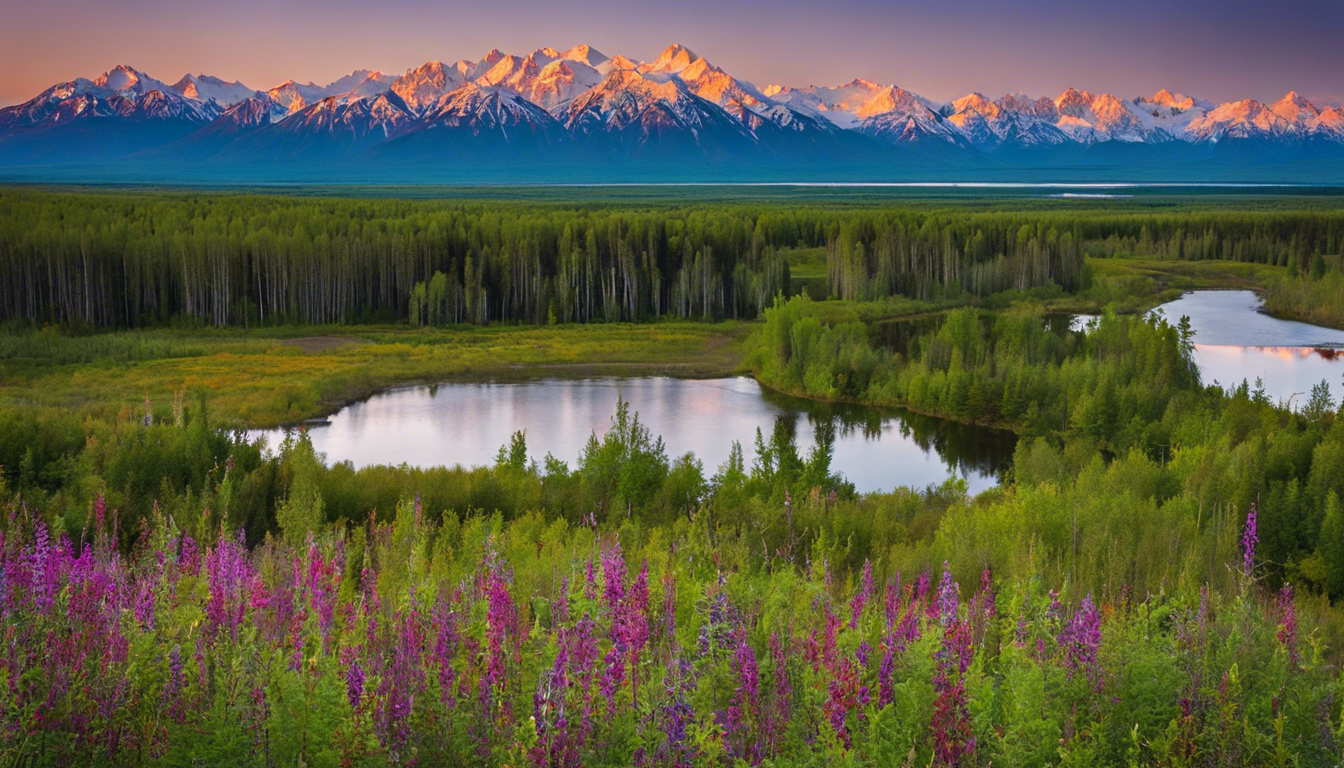
Moving to Wasilla, Alaska, is like stepping into a living postcard where the spirit of adventure meets the warmth of a tight-knit community. Nestled in the heart of the Matanuska-Susitna Valley, Wasilla is a city that embodies the essence of Alaskan hospitality, combining the convenience of city living with the unspoiled beauty of Alaska's natural landscapes.
Despite its cold winters and mild summers, Wasilla offers a plethora of outdoor recreational opportunities. The city is surrounded by majestic mountains, pristine lakes, and lush forests, creating a playground for nature enthusiasts. Whether it's swimming in the local lakes during the warm summers, enjoying the beautiful warm autumns, or engaging in winter sports, Wasilla provides a year-round backdrop for adventure.
The city has evolved significantly from its origins as a small mining supply town. Now, Wasilla is recognized for its beautiful scenery, including breathtaking views of mountains, forests, and lakes, which provide ample opportunities for outdoor recreation. This transformation has seen the city grow in both population and amenities, making it more than just a bedroom community for Anchorage. Located just 40 miles north of Alaska's largest city, Wasilla offers the peace and quiet of small-town living with close proximity to urban conveniences.
Wasilla's community is known for its friendly and welcoming nature, contributing to a safe and congenial environment for raising a family. The city is also home to notable attractions such as the Iditarod Trail Sled Dog Race and the Wasilla Museum, adding to its cultural richness and historical significance.
However, like any city, Wasilla faces its challenges, including long, cold winters and a downtown area that lacks the quaintness found in other Alaskan towns. The city has also experienced issues related to urban planning and community development, impacting its economic diversity and quality of life. Despite these hurdles, Wasilla remains a place where the beauty of Alaska can be enjoyed alongside the comforts of modern living.
Wasilla, Alaska, as of the 2020 Census, had a population of 9,054, which increased to 9,711 by July 1, 2022. This represents a 7.2% growth from the population estimates base on April 1, 2020, of 9,061. The city spans an area of 12.40 square miles as of 2020, with a population density of 730.4 people per square mile. Demographically, 77.6% of the population identifies as White alone, 1.3% as Black or African American alone, 6.9% as American Indian and Alaska Native alone, 3.1% as Asian alone, 0.4% as Native Hawaiian and Other Pacific Islander alone, and 9.1% as Two or More Races. Hispanic or Latino of any race make up 6.7% of the population.
The median household income in Wasilla as of 2018-2022 stands at $69,534, with a per capita income of $38,415 in the past 12 months. The poverty rate is 12.9%. Education-wise, 95.3% of residents aged 25 and over are high school graduates or higher, and 20.2% hold a bachelor's degree or higher.
In terms of housing, there are 4,066 households, with an average of 2.26 persons per household. The owner-occupied housing unit rate is 53.7%, with a median value of owner-occupied housing units at $302,200. The median gross rent is $1,105.
The city has a veteran population of 846, and 5.8% of the population is foreign-born. The civilian labor force participation rate is 56.4%, with 49.9% being female. Total retail sales in 2017 were $882,630,000, with a per capita figure of $86,993.
In 2017, the total accommodation and food services sales amounted to $105,260,000, health care and social assistance receipts/revenue were $173,119,000, and transportation and warehousing receipts/revenue were $19,471,000. The mean travel time to work for workers aged 16 years and over is 30.7 minutes.
As for businesses, in 2017, there were 655 employer firms in Wasilla, including 292 men-owned and 87 minority-owned firms. The veteran-owned and nonveteran-owned firms numbered 67 and 435, respectively.
In summary, Wasilla stands as a testament to Alaskan hospitality, offering a blend of adventure, community, and tranquility. It's a city where the great outdoors beckons at your doorstep, and the warmth of the community makes it a place to call home. Whether you're drawn to the allure of living amidst stunning natural landscapes or the charm of a friendly community, Wasilla offers a unique lifestyle that is both enriching and rewarding.
